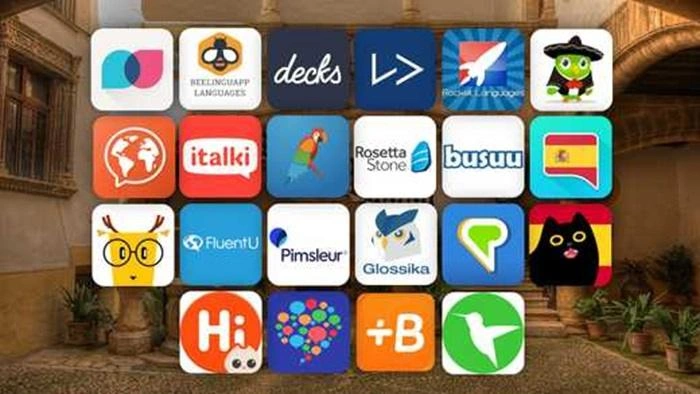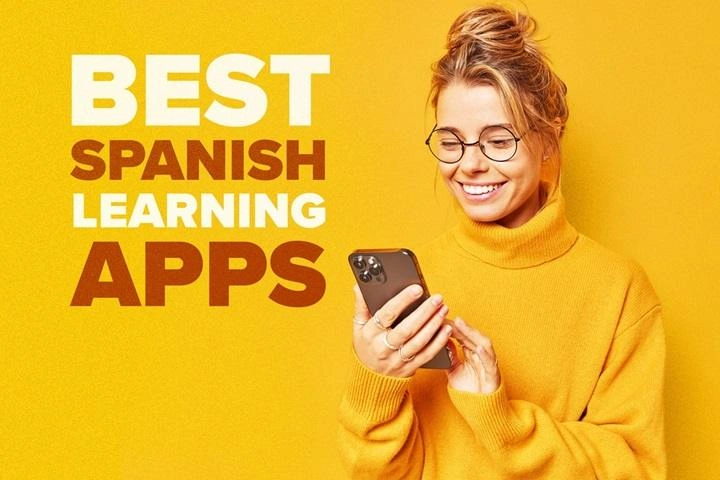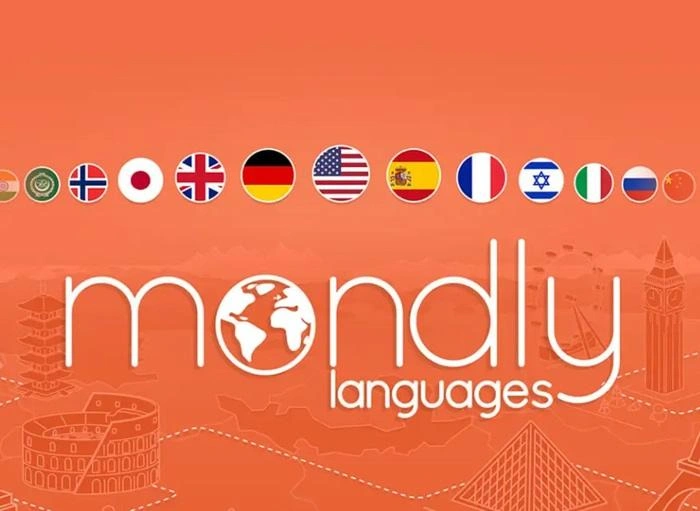Learning a new language like Spanish has never been easier, thanks to the vast array of apps available today. Whether you’re a beginner or looking to refine your skills, the best apps to learn Spanish offer a variety of features to suit your learning style. From interactive lessons and vocabulary building to immersive experiences and real-world practice, these apps provide a convenient and effective way to learn Spanish at your own pace. This guide will explore the top apps for learning Spanish, their unique features, and how they cater to different learning needs.
Why Use Apps to Learn Spanish?
Benefits of Learning Spanish with Apps
There are several advantages to using apps for learning Spanish:
- Convenience: Learn anywhere and anytime, whether you’re at home, on the go, or traveling.
- Personalized Learning: Apps often use algorithms to tailor lessons to your learning pace and preferences.
- Engaging Content: Interactive lessons, games, and quizzes make learning fun and effective.
- Accessibility: Many apps are free or affordable, making language learning accessible to everyone.
- Real-Time Feedback: Immediate feedback helps correct mistakes and reinforce learning.
Key Features to Look for in the Best Apps to Learn Spanish
When choosing the best apps to learn Spanish, consider the following features:
- Interactive Lessons: Engaging and interactive content that makes learning enjoyable.
- Vocabulary Building: Tools and exercises designed to expand your vocabulary.
- Grammar and Pronunciation: Lessons that focus on grammar rules and proper pronunciation.
- Progress Tracking: Features that allow you to track your progress and set learning goals.
- Cultural Insights: Content that provides context about Spanish-speaking cultures to enhance understanding.
Top 10 Best Apps to Learn Spanish

1. Duolingo
Duolingo is one of the most popular language-learning apps, known for its gamified approach to learning Spanish. It offers bite-sized lessons that cover vocabulary, grammar, and pronunciation.
Why Choose Duolingo?
- Gamified Learning: Makes learning fun with a game-like interface and rewards.
- Comprehensive Content: Covers a wide range of topics, from basic vocabulary to complex grammar.
- Free to Use: Offers a free version with optional in-app purchases.
2. Babbel
Babbel is designed for serious learners who want to build a strong foundation in Spanish. It offers structured courses that focus on conversation skills, grammar, and vocabulary.
Why Choose Babbel?
- Structured Lessons: Offers courses designed by language experts, focusing on real-life conversations.
- Speech Recognition: Features a speech recognition tool to improve pronunciation.
- Offline Access: Download lessons to learn on the go without an internet connection.
3. Rosetta Stone
Rosetta Stone uses an immersive approach to language learning, encouraging users to learn Spanish by associating words with images and sounds.
Why Choose Rosetta Stone?
- Immersive Learning: Uses a natural language acquisition method, similar to how children learn languages.
- Comprehensive Curriculum: Covers speaking, listening, reading, and writing skills.
- Live Tutoring: Offers live tutoring sessions with native speakers for additional practice.
4. Memrise
Memrise combines language learning with cultural immersion, using videos of native speakers and interactive games to teach Spanish.
Why Choose Memrise?
- Native Speaker Videos: Helps with understanding real-world pronunciation and accents.
- Fun and Engaging: Uses spaced repetition and mnemonic techniques to reinforce learning.
- Community Features: Allows users to learn from and interact with other learners.
5. FluentU
FluentU transforms real-world videos, such as music videos, movie trailers, and news clips, into personalized Spanish lessons.
Why Choose FluentU?
- Authentic Content: Uses real-world videos to teach Spanish in context.
- Interactive Captions: Provides interactive captions that explain vocabulary and grammar.
- Personalized Learning: Adjusts the difficulty level based on your progress.
6. Pimsleur
Pimsleur focuses on listening and speaking skills through its audio-based lessons, ideal for learners who want to practice conversational Spanish.
Why Choose Pimsleur?
- Audio-Based Learning: Perfect for learning on the go, especially for auditory learners.
- Focus on Conversation: Prioritizes speaking and listening skills to build conversational fluency.
- 30-Minute Lessons: Structured lessons that fit easily into a daily routine.
7. Busuu
Busuu offers interactive language courses with a focus on community-based learning, allowing users to practice with native Spanish speakers.
Why Choose Busuu?
- Community Interaction: Provides opportunities to practice with native speakers for real-world experience.
- Offline Mode: Download lessons and learn without an internet connection.
- AI-Powered Reviews: Uses AI to provide personalized feedback on your progress.
8. Lingodeer
Lingodeer offers a structured approach to learning Spanish, with lessons that cover grammar, vocabulary, and sentence structure.
Why Choose Lingodeer?
- Grammar-Focused: Emphasizes understanding grammar and sentence structure.
- Engaging Exercises: Offers interactive exercises to practice reading, writing, and speaking.
- Customizable Learning: Allows you to choose specific areas to focus on.
9. Drops
Drops focuses on building vocabulary through visual learning and quick, 5-minute sessions that are perfect for busy learners.
Why Choose Drops?
- Visual Learning: Uses images and illustrations to teach vocabulary.
- Short Sessions: Designed for quick learning, ideal for those with limited time.
- Engaging Design: Provides a colorful and engaging interface to make learning fun.
10. HelloTalk
HelloTalk connects users with native Spanish speakers around the world for language exchange through text, voice, and video chats.
Why Choose HelloTalk?
- Real-World Practice: Allows you to practice speaking with native speakers in real-time.
- Language Exchange: Encourages cultural exchange and learning through conversation.
- Translation Tools: Built-in translation and pronunciation tools to aid learning.
How to Choose the Best App to Learn Spanish
Key Factors to Consider
When choosing the best app to learn Spanish, consider the following factors:
- Learning Style: Choose an app that aligns with your preferred learning style (visual, auditory, interactive, etc.).
- Skill Level: Make sure the app offers content suitable for your current skill level, whether you’re a beginner or an advanced learner.
- Features and Tools: Look for features like speech recognition, progress tracking, and interactive lessons that enhance the learning experience.
- Budget: Consider whether the app fits within your budget, including potential in-app purchases or subscription fees.
- Content Variety: Choose an app that offers a wide range of content to keep learning engaging and comprehensive.
How to Maximize Your Learning with Apps
- Set Daily Goals: Establish daily learning goals to stay motivated and track your progress.
- Practice Regularly: Consistency is key. Dedicate a specific time each day to practice and review lessons.
- Engage with Native Speakers: Use apps that offer community interaction or language exchange to practice speaking with native speakers.
- Use Multiple Apps: Consider using more than one app to cover different aspects of language learning, such as vocabulary, grammar, and conversation skills.
- Take Advantage of Free Trials: Many apps offer free trials or basic versions. Test several to find the best fit for your learning needs.
Table: Comparison of the Best Apps to Learn Spanish
| App | Best For | Key Features | Cost |
| Duolingo | Gamified learning | Game-like interface, comprehensive content | Free (in-app purchases) |
| Babbel | Structured lessons | Conversation focus, speech recognition, offline access | Subscription-based |
| Rosetta Stone | Immersive learning | Image-word association, comprehensive skills | Subscription-based |
| Memrise | Cultural immersion | Native speaker videos, interactive games | Free (premium version available) |
| FluentU | Learning with real-world videos | Authentic content, interactive captions | Subscription-based |
| Pimsleur | Audio-based learning | Conversational focus, 30-minute lessons | Subscription-based |
| Busuu | Community-based learning | Native speaker practice, AI-powered feedback | Free (premium version available) |
| Lingodeer | Grammar-focused learning | Structured lessons, engaging exercises | Free (in-app purchases) |
| Drops | Vocabulary building | Visual learning, short sessions | Free (premium version available) |
| HelloTalk | Real-world language practice | Language exchange, translation tools | Free (in-app purchases) |
Additional Tips for Learning Spanish with Apps
Stay Consistent and Motivated
To make steady progress, practice regularly and set achievable goals. Celebrate your milestones to stay motivated.
Engage with the Language Daily
Immerse yourself in the language daily by listening to Spanish music, watching Spanish shows, or reading Spanish articles to reinforce what you’ve learned.
Use Apps to Supplement Other Learning Methods
Combine app-based learning with other methods, such as attending a Spanish class, using textbooks, or practicing with native speakers to deepen your understanding.
Take Advantage of App Features
Explore all the features your app offers, such as progress tracking, community interaction, and speech recognition, to enhance your learning experience.
FAQs About the Best Apps to Learn Spanish
1. Can I learn Spanish fluently using just apps?
While apps are a great tool for learning Spanish, fluency often requires practice with native speakers and immersion in the language and culture.
2. Are free apps as effective as paid ones?
Many free apps offer valuable features for learning Spanish. However, paid apps often provide more comprehensive content and advanced features.
3. How often should I use language learning apps?
Consistency is key. Aim to practice daily, even if it’s just for a few minutes, to reinforce learning and build habits.
4. What app is best for beginners?
Duolingo and Babbel are great for beginners due to their structured lessons and user-friendly interfaces.
5. Can I use multiple apps to learn Spanish?
Yes, using multiple apps can provide a more rounded learning experience by covering different aspects of the language, such as vocabulary, grammar, and conversation skills.
Related Post:
Cheating Secret Messaging Apps That Look Like Games: What You Need to Know
Does Applebee’s Still Have Half Price Apps? Everything You Need to Know
Applebee’s Half Price Apps 3-6: A Complete Guide to the Best Deals
Finding the best apps to learn Spanish depends on your learning style, goals, and preferences. Whether you prefer structured lessons, interactive games, or real-world practice with native speakers, there’s an app that fits your needs. By exploring the options listed in this guide and using the tips provided, you can effectively learn Spanish and achieve your language learning goals.



